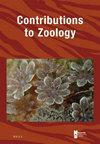The invasive alien freshwater flatworm Girardia tigrina (Girard, 1850) (Platyhelminthes, Tricladida) in Western Europe: new insights into its morphology, karyology and reproductive biology
IF 2.2
2区 生物学
Q1 ZOOLOGY
引用次数: 6
Abstract
Invasions of alien species form one of the major threats to global biodiversity. Among planarian flatworms many species are known to be invasive, in several cases strongly affecting local ecosystems. Therefore, a detailed knowledge on the biology of an invasive species is of utmost importance for understanding the process of invasion, the cause of its success, and the subsequent ecological impact on native species. This paper provides new information on the biology of introduced populations of the freshwater flatworm Girardia tigrina (Girard, 1850) from Europe. This species is a native of the Nearctic Region that was accidentally introduced into Europe in the 1920s. Since then, numerous records across the European continent bear witness of the invasiveness of this species, although only a few studies focused on the biology of the introduced populations. We report on the morphology of sexualized individuals from a fissiparous Italian population, representing the second record of spontaneous sexualization of fissiparous individuals in this species. A detailed morphological account of the reproductive apparatus of these ex-fissiparous animals is presented. Our results increased the number of morphological groups previously recognized for European populations of G. tigrina, thus corroborating the hypothesis on multiple independent introductions to this continent. Karyological results obtained from our fissiparous Italian individuals revealed a constant diploid chromosome complement of sixteen chromosomes. Further, we document the marked intraspecific variation in several morphological features of this species.西欧入侵的外来淡水扁虫Girardia tigrina(Girard,1850)(Platyhelmintes,Tricladida):对其形态学、核型和生殖生物学的新见解
外来物种的入侵是对全球生物多样性的主要威胁之一。在涡虫中,已知许多物种具有入侵性,在某些情况下会强烈影响当地生态系统。因此,对入侵物种生物学的详细了解对于理解入侵过程、成功原因以及随后对本地物种的生态影响至关重要。本文提供了从欧洲引进的淡水扁虫Girardia tigrina(Girard,1850)种群的生物学新信息。该物种原产于20世纪20年代偶然引入欧洲的近北地区。从那时起,欧洲大陆的大量记录证明了该物种的入侵性,尽管只有少数研究集中在引入种群的生物学上。我们报道了一个有裂缝的意大利种群的性化个体的形态,这是该物种中有裂缝的个体自发性化的第二个记录。对这些未受精动物的生殖器官进行了详细的形态学描述。我们的研究结果增加了以前在欧洲虎种群中识别的形态群的数量,从而证实了多次独立引入该大陆的假设。从我们的意大利分裂个体获得的染色体分析结果显示,16条染色体组成的恒定的二倍体染色体互补。此外,我们记录了该物种几个形态特征的显著种内变异。
本文章由计算机程序翻译,如有差异,请以英文原文为准。
求助全文
约1分钟内获得全文
求助全文
来源期刊

Contributions to Zoology
生物-动物学
CiteScore
4.00
自引率
4.50%
发文量
16
审稿时长
>12 weeks
期刊介绍:
Contributions to Zoology solicits high-quality papers in all systematics-related branches of comparative zoology (including paleozoology). Preference will be given to manuscripts dealing with conceptual issues and to integrative papers (e.g., ecology and biodiversity, morphology and phylogeny and character state evolution, phylogeny and historical biogeography, systematics and bioinformatics, bioinformatics and biodiversity, habitat disturbance and biogeography, etc.). Reviews and alpha-taxonomic contributions are considered for publication, but acceptance will depend on their high quality and exceptional nature.
 求助内容:
求助内容: 应助结果提醒方式:
应助结果提醒方式:


